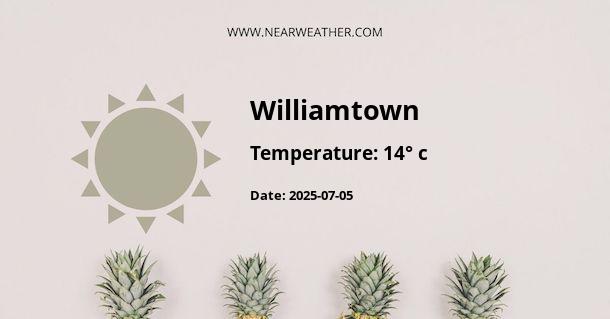Climate and Weather in Williamtown, Australia
Located in New South Wales, Australia, Williamtown is a coastal suburb known for its unique climate and weather patterns. Its proximity to the coast and its geographical features contribute to its distinct climate, making it an interesting place to study and experience different weather phenomena throughout the year.
Geographical Features
Williamtown is situated near the Hunter River and is surrounded by various geographical features that influence its climate. The suburb is bordered by the Tasman Sea to the east, providing a maritime influence on its weather patterns. The presence of the Hunter River and nearby wetlands also affects local temperatures and precipitation levels.
Temperature
Williamtown experiences a temperate climate, characterized by mild winters and warm summers. The average annual temperature in the region is around 20 degrees Celsius (68 degrees Fahrenheit). However, it is important to note that temperatures can vary significantly throughout the year.
During the summer months (December to February), temperatures in Williamtown can reach an average high of 27 degrees Celsius (81 degrees Fahrenheit), occasionally exceeding 30 degrees Celsius (86 degrees Fahrenheit). The warmest month is typically January, with average highs of 28 degrees Celsius (82 degrees Fahrenheit).
Winter in Williamtown (June to August) is mild, with average temperatures ranging between 8 and 17 degrees Celsius (46 and 63 degrees Fahrenheit). July is the coldest month, with average lows of 8 degrees Celsius (46 degrees Fahrenheit).
Precipitation
Williamtown experiences a moderate amount of rainfall throughout the year. The wettest months are typically between January and March, coinciding with the summer season. During this period, the suburb receives an average of 100-150mm (3.9-5.9 inches) of rainfall per month.
Winter months tend to be drier, with average monthly rainfall of around 50-70mm (1.9-2.7 inches). However, it is important to note that rainfall can vary significantly from year to year, and extreme weather events such as storms and heavy downpours can occur at any time.
Wind Patterns
Due to its coastal location, Williamtown experiences the influence of sea breezes, which can affect the local wind patterns. During the day, cool sea breezes from the east provide relief from the summer heat, while at night, land breezes from the west can bring cooler air from inland areas.
Stronger winds can also occur during periods of low-pressure systems and storms, which can bring gusty conditions to the area. Wind speeds can vary throughout the year, with average speeds ranging from 10 to 20 kilometers per hour (6 to 12 miles per hour).
Sunshine Hours
Williamtown enjoys a relatively high number of sunshine hours throughout the year, making it an appealing destination for outdoor activities and tourism. On average, the suburb receives around 8 hours of sunshine per day.
Summers tend to have more sunshine hours, with the longest days occurring around the summer solstice in December. In contrast, winter days are shorter, with fewer sunshine hours. However, even in winter, Williamtown still receives a reasonable amount of sunlight.
Climate Extremes
While Williamtown generally experiences a temperate climate, it is not immune to extreme weather events. The region can be affected by heatwaves, bushfires, storms, and occasional flooding. These events can have a significant impact on the local weather and can occur at any time throughout the year.
It is worth noting that climate change can influence the frequency and intensity of extreme weather events. As global temperatures continue to rise, it is important to monitor and adapt to these changes to ensure the safety and well-being of the local community.
Conclusion
Williamtown, Australia, offers a fascinating climate and weather experience throughout the year. With its temperate climate, mild winters, and warm summers, the suburb provides a pleasant environment for residents and visitors alike. The influence of geographical features, such as the Tasman Sea and the Hunter River, adds to the uniqueness of the weather patterns experienced in the area. From mild winters to occasional extreme weather events, Williamtown's climate provides a diverse range of experiences for those interested in studying or exploring the region's weather.
A - Williamtown's Latitude is -32.816669 & Longitude is 151.850006.
A - Weather in Williamtown is 22° today.
A - Climate Conditions in Williamtown shows few clouds today.
A - Humidity in Williamtown is 62% today.
A - Wind speed in Williamtown is 24.08 km/h, flowing at 160° wind direction. today.
